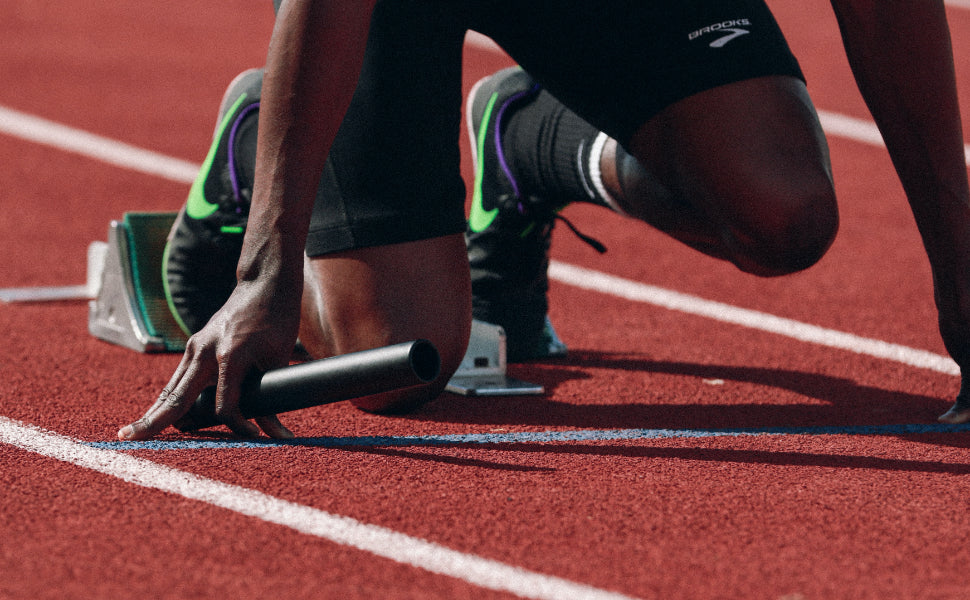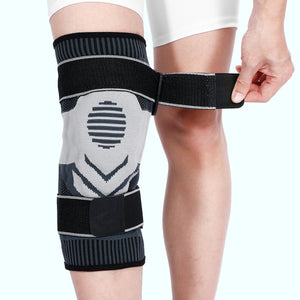What Is Runners Knee?

Runner's knee is not just a problem for experienced runners; those who do other physical exercises can also have it. For both sportsmen and fitness lovers, it is imperative to comprehend the underlying causes of the ailment and take preventive action. This article will discuss the causes of a runner's knee, its symptoms, and practical recommendations for managing and preventing this prevalent condition.
fivalifitness.com
Symptoms
Patellofemoral pain syndrome, another name for runner's knee, is characterized by pain and discomfort in the area at the front of the knee. Running, crouching, and ascending stairs are among of the activities that might exacerbate the symptoms, which can range in severity from mild to severe.
Runner's knee typically manifests as one or more of the following symptoms:
- Knee pain: The main complaint is pain in and around the knee, particularly behind or at the patella (kneecap). One could characterize the discomfort as a scorching sensation, a sharp pain, or a dull ache. Exercises that require bending the knee, including jogging, leaping, or squatting, can make it worse.
- Increased discomfort with physical activity: Exercises that strain the knee joint, such as jogging downhill, climbing stairs, or spending extended amounts of time sitting with the knee bent, sometimes make the pain worse.
- Swelling: Some people may have slight puffiness or swelling around the knee joint. The front of the knee is often where this swelling is located, and its intensity can change.
- Grinding or popping sensation: When rotating the knee joint, some runner's knee sufferers may feel a grinding or popping sensation. Roughness or irregularities in the cartilage beneath the kneecap are frequently the cause of this.
- Stiffness and restricted range of motion: After extended periods of inactivity or following exercise, the knee may feel stiff. This may make it difficult to bend or fully straighten the knee.
It is crucial to remember that runner's knee symptoms can fluctuate in severity over time, ranging from little discomfort to excruciating pain. For an accurate diagnosis and suitable treatment, it is advised that you speak with a healthcare provider if you are dealing with chronic knee pain or any of these symptoms.
Causes and Risk Factors
The causes of runner's knee, also known as patellofemoral pain syndrome, vary, but they all entail circumstances that place undue strain on the knee joint. Among the frequent reasons and danger signs are:
- Overuse and repetitive stress: Exercises like running, leaping, or cycling that require the knee to bend repeatedly can cause overuse and irritation of the structures surrounding the knee joint.
- Muscle imbalances: The alignment and mechanics of the knee joint can be affected by weakness or imbalances in the muscles that support the knee, particularly the hip and quadriceps (thigh muscles). Increased stress on the patella (kneecap) and the structures around it may result from this.
- Biomechanical problems: Runner's knee can result from anatomical abnormalities or imbalances in the lower extremities, such as flat feet, high arches, or misaligned legs. These problems may alter the way forces are distributed within the knee joint, putting more strain on the patella.
- Poor form during running: Mistakes like overstriding, landing firmly on the heels, or excessive foot inward or outward rotation can change the way the knee joint works and increase the risk of developing runner's knee.
- Inappropriate footwear: Knee discomfort and injuries can be more likely to occur while wearing inappropriate or worn-out shoes that do not offer enough support or cushioning.
- Additional contributing factors: The chance of developing runner's knee can also be raised by elements like abrupt increases in training volume or intensity, incorrect warm-up and cool-down techniques, running on hard or uneven terrain, and a history of knee injuries.
It is noteworthy that although these characteristics are frequently linked to runner's knee, individual experiences may differ. Getting advice from a medical expert can help pinpoint particular problems and create a customized treatment strategy.
Treatment and Management
The therapy and management of a runner's knee, also known as patellofemoral pain syndrome, aims to ease discomfort, reduce inflammation, rectify underlying causes, and prevent future occurrences. The subsequent methods are frequently employed:
- Rest and activity modification: You can reduce symptoms by stepping away from activities that aggravate your pain. Maintaining fitness levels while allowing the knee to heal can be achieved by taking part in low-impact workouts or cross-training activities like swimming or cycling that do not strain the knee joint.
- Exercises and physical therapy: A physical therapist can create a personalized workout plan to address any muscular imbalances or biomechanical problems, strengthen the knee's surrounding muscles, and increase flexibility. Exercises for the quadriceps, hamstrings, hip muscles, and core muscles may fall under this category.
- Pain management: Nonsteroidal anti-inflammatory medicines (NSAIDs), an over-the-counter pain reliever, can help lessen discomfort and inflammation. Before taking any drug, though, it's crucial to speak with a medical expert.
- Using taping techniques or running knee braces: These methods can give the knee more stability and support, which can ease pain and lessen strain on the patella.
- Orthotics or shoe inserts: Using orthotics or shoe inserts can help improve knee joint alignment and support while also helping to rectify foot mechanics in certain situations.
- Surgical options: Surgical operations like arthroscopy or realignment procedures may be taken into consideration in rare instances where conservative therapy is unable to relieve the patient's symptoms.
A healthcare professional's advice is crucial for obtaining an accurate diagnosis and creating a treatment plan that is tailored to each patient's needs.
Prevention and Tips for Runners
Preventing runner's knee, also known as patellofemoral pain syndrome, entails implementing specific measures and habits to reduce the likelihood of acquiring knee pain. Here is some advice for runners on prevention:
- Warm-up and cool-down: Do a vigorous warm-up to loosen up your muscles before running. Static stretches might help you become more flexible after a run and help you calm down gradually.
- Strength training: Incorporate exercises that strengthen the hamstrings and quadriceps, which surround the knee and offer support and stability.
- Gradual advancement: Steer clear of abrupt increases in distance or intensity. Increase your training gradually to give your body time to adjust and prevent overuse issues.
- Proper running form: Maintain good form with short strides, a slight forward lean, and landing midfoot or forefoot. Refrain from rotating your foot too much.
- Proper footwear: Make sure your running shoes fit properly and offer the right amount of cushioning and support. Regularly replace worn-out shoes.
- Listen to your body: Be aware of any pain or discomfort signals. Take days off or cut back on your training as necessary. If the pain doesn't go away, visit a doctor.
- Cross-training and diverse surfaces: Incorporate other sports like swimming or cycling to prevent knee stress. Change up your running surfaces to reduce the impact of repetition.
- Maintain a healthy weight: A balanced diet and frequent exercise will help you maintain a healthy weight, which will lessen the strain on your knees.
fivalifitness.com
Reference
Patellofemoral Pain Syndrome (Runner's Knee)
5 Steps to Fix Runner's Knee - YouTube
*Disclaimer
The information provided in articles written by Fivali is intended for educational and reference purposes only. The content on this website (www.fivalifitness.com) is not intended to diagnose, treat, cure, or prevent any disease. We do not recommend self-diagnosis or self-treatment based on the information provided in our articles. Always consult a qualified healthcare professional if you have any concerns about your health or well-being.
If you are experiencing any symptoms or discomfort, we strongly encourage you to seek medical attention from a qualified healthcare professional. Only a licensed healthcare practitioner can provide an accurate diagnosis and appropriate treatment plan tailored to your individual needs.













